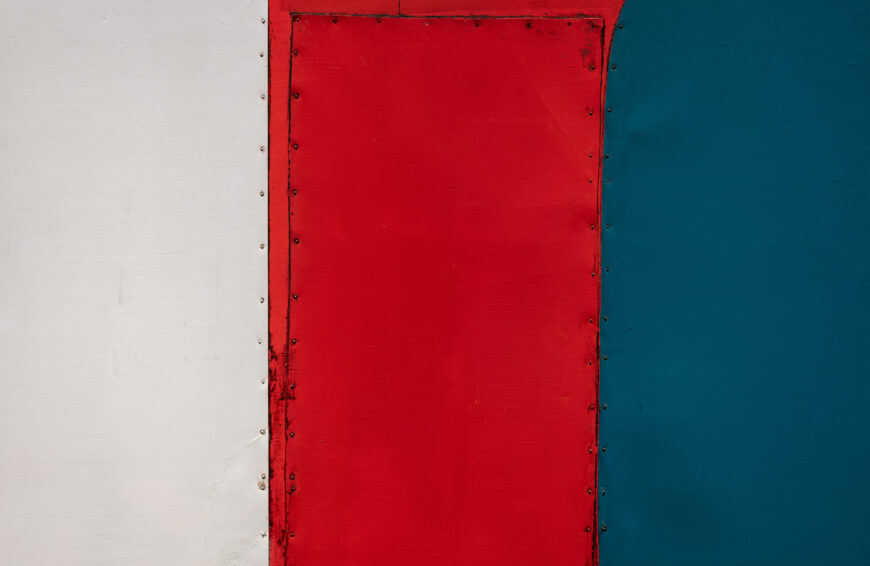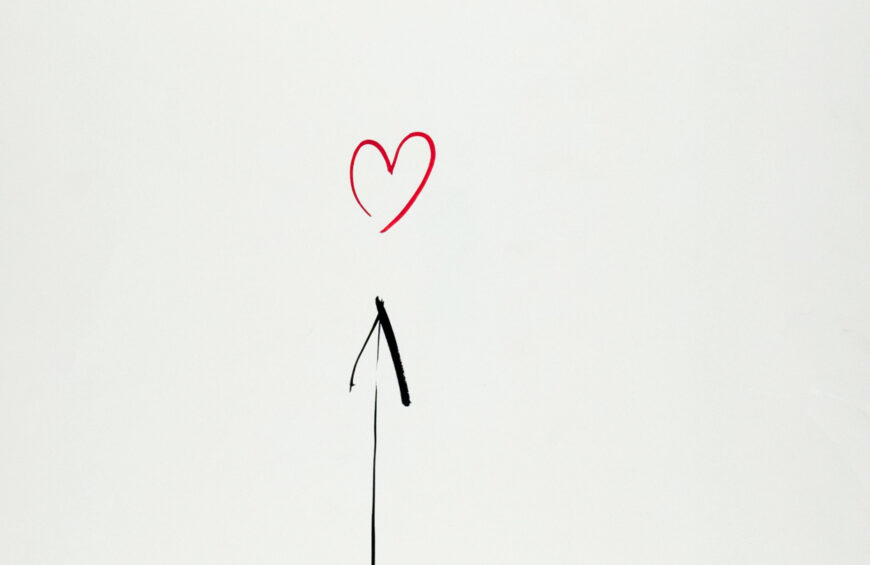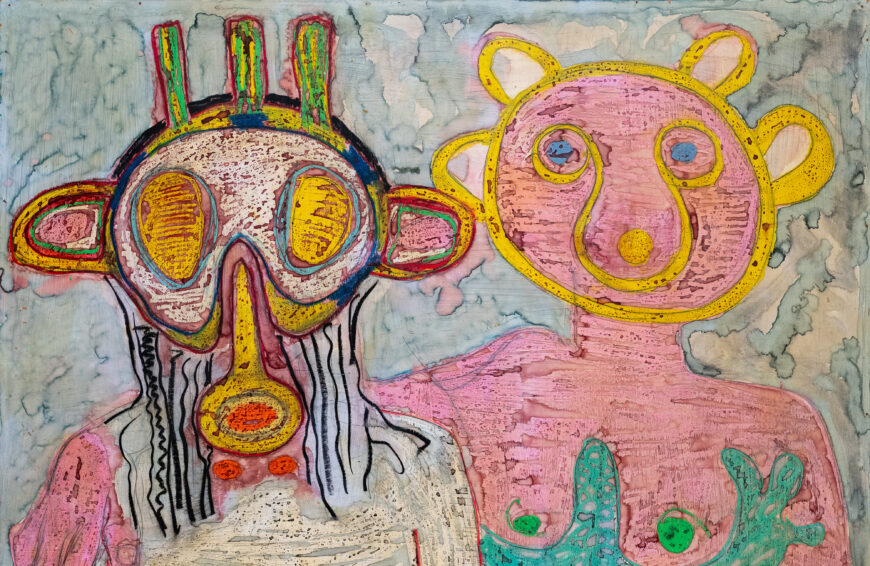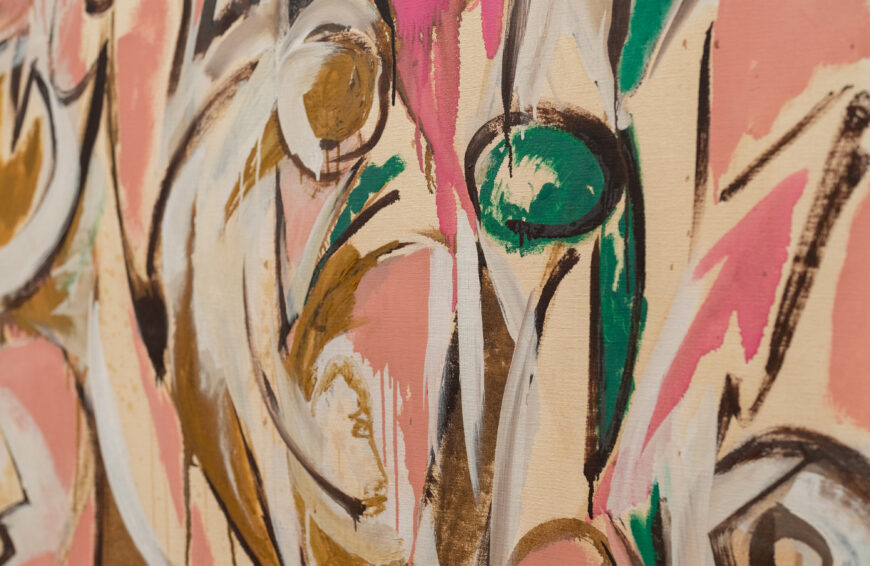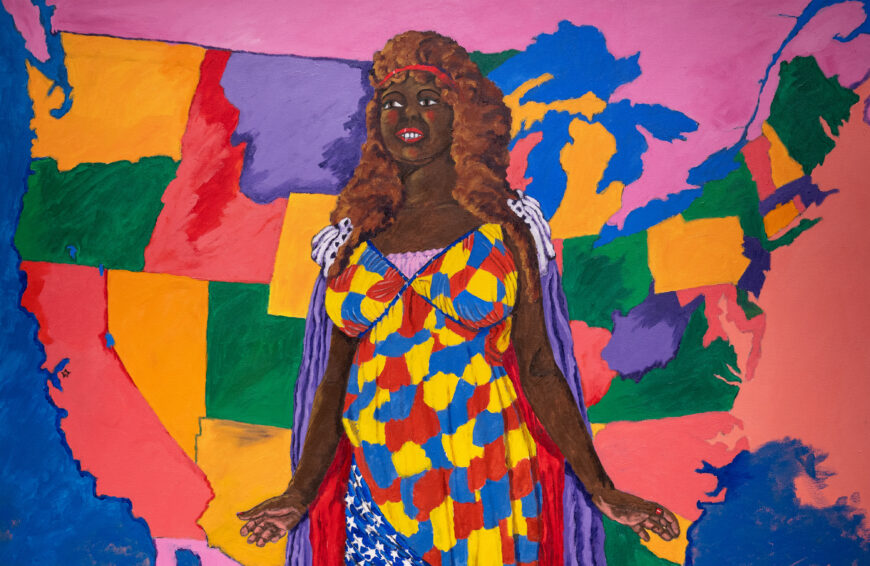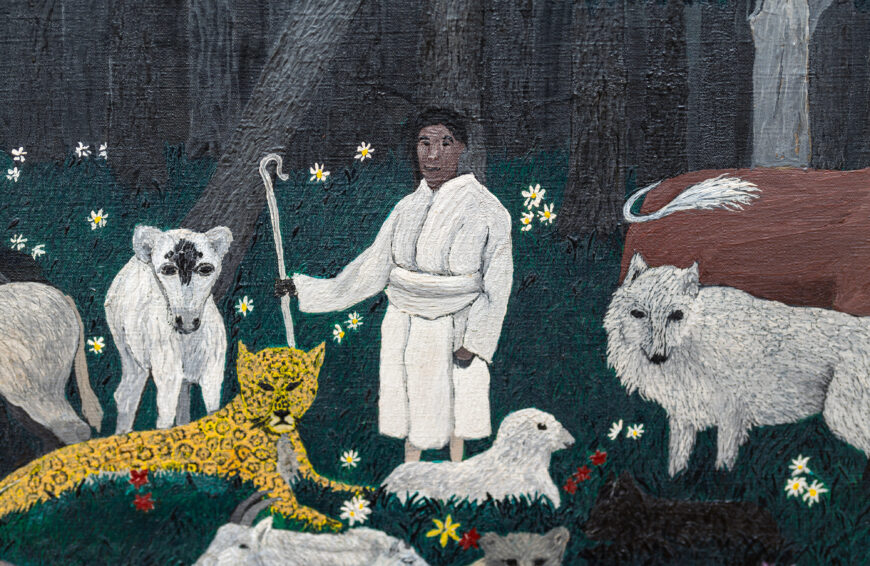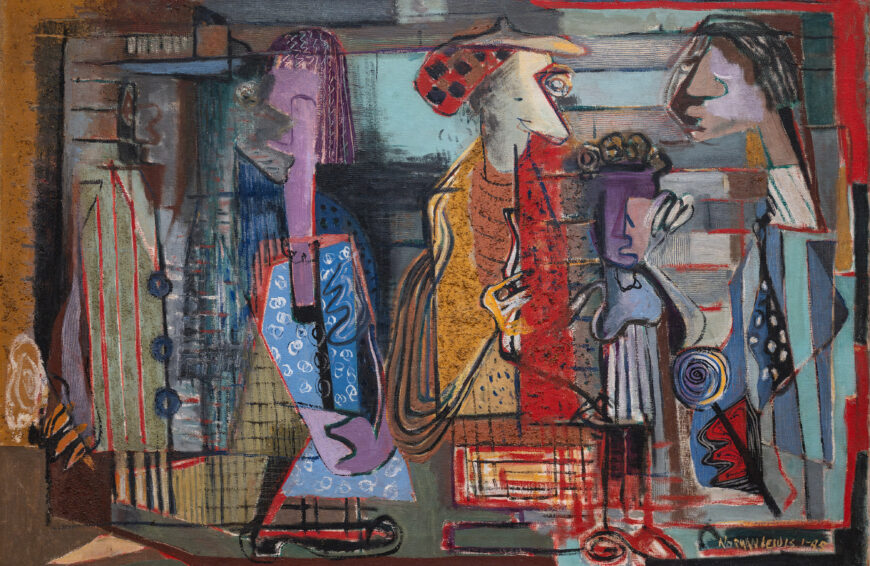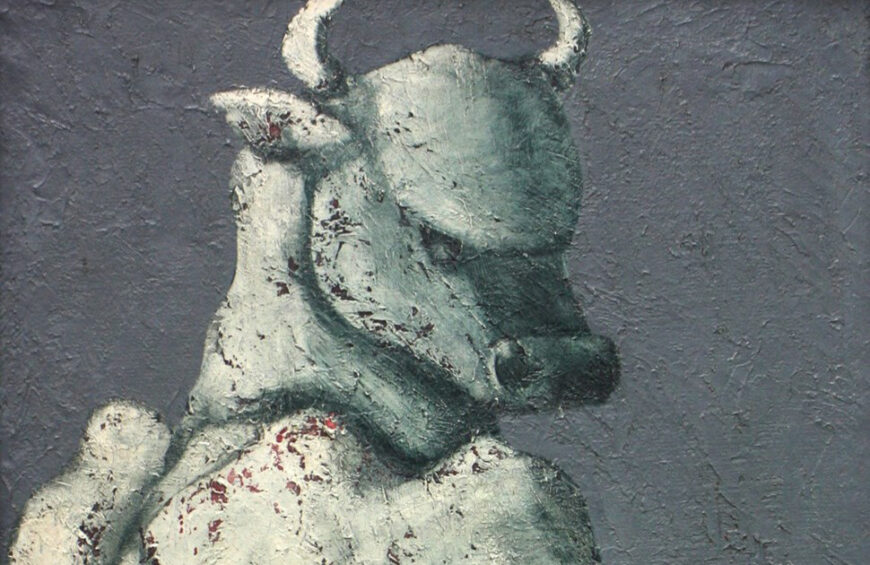Joseph Stella, The Voice of the City of New York Interpreted, 1920-22, oil and tempera on canvas (five panels), 99.75 x 270 inches overall (Purchase 1937 Felix Fuld Bequest Fund 37.288a-e, Newark Museum), a Seeing America video
[0:00] [music]
Dr. Steven Zucker: [0:10] We’re in the Newark Museum, standing in front of an enormous work of art, Joseph Stella’s “The Voice of the City of New York Interpreted.” It’s five panels. It’s a polyptych. It’s as if we’re standing in front of an altar.
Dr. Tricia Laughlin Bloom: [0:19] There’s enough of a suggestion of the actual architecture of New York City that you feel like you’ve been pulled into the heart of it.
Dr. Zucker: [0:26] But this is not photographic. This is a moment in the development of Modernism where there’s this mix between abstraction and what the artist is actually seeing. Here, the abstraction seems to be a perfect vehicle to express the prismatic qualities of the city. Its energy. Its dynamism. It’s almost overwhelming in its kaleidoscopic quality.
Dr. Laughlin Bloom: [0:48] That’s actually the way that Stella described it. He wanted us to feel what it feels like to encounter this new world, Stella himself having been an immigrant to the United States at the age of 18. The image really doesn’t have a beginning and end like a typical narrative, but all the same we read from left to right, and at the left we have the port.
Dr. Zucker: [1:15] But for all the power and energy of the geometric lines that crisscross this panel, the large blue field, the night sky, quiets the scene. We’re aware that this is a place of tremendous activity, but not so much at night when we’re seeing it, and so this is a moment of quiet. Joseph Stella wrote about this panel.
Dr. Laughlin Bloom: [1:29] “You have reached the harbor, you are standing where all the arteries of the great giant meet and a quiet sea and sky overwhelm you. You have left the noise and glare of Broadway. All the hardness and brilliance fade away in the stillness of the night.”
Dr. Zucker: [1:44] For a man who grew up outside of Naples, New York must have been shocking in its modernity. What’s so interesting is that this set of paintings was made soon after the artist returned from Europe, where he had worked with some of the Futurists. This is a celebration of industry, it’s a celebration of the beauty that man has created in the modern world.
Dr. Laughlin Bloom: [2:05] If we move on to “The White Way,” which is the first panel that represents Broadway, which by 1920 was a huge center of tourism and most of all electric lights and sound.
Dr. Zucker: [2:18] We have almost this heavenly explosion of light above us. We have this incredible velocity in the center area, where we seem to be able to move back with our eyes along the Great White Way, along Broadway. Broadway itself seems transparent, we can see below the subway grates and we can see into the subterranean city, and so the city is above us, it’s below us, and it’s in front of us.
Dr. Laughlin Bloom: [2:41] We feel like a part of that pulsing collective that makes the city so special.
Dr. Zucker: [0:00] Stella wrote about this second panel, “The White Way.”
Dr. Laughlin Bloom: [2:50] “Here are sensations produced by the confusion of light and sound as one emerges from subterranean passages to the street above.”
Dr. Zucker: [2:59] If we think of this polyptych as a modern version of a traditional religious altarpiece, in the center, where we would expect to see Christ on a cross perhaps, we see instead the skyscrapers of the city. The lights that emanate from the skyscraper in the center, which itself emanates from one of the most famous early skyscrapers in New York, the Flatiron Building, seems to fan out.
[3:31] Then we have this area of blue closer to the bottom, which itself seem almost like streetlights that become almost like the wings of a bird. The entire city, for all of its mass and physical weight, almost seems light, almost seems as if it could take flight.
Dr. Laughlin Bloom: [3:38] “An interpretation of the city’s colossal skyscrapers blended together in a symphony of lights in the shape of a high vessel’s prow.”
Dr. Zucker: [3:49] The city becomes like a ship. The city is a machine. And although the center panel is titled “Skyscrapers,” what we’re seeing are not only buildings. We’re also seeing expressions of industry. On the right is a gas tower. On the left, probably smokestacks. The fourth panel from the left mirrors its opposite, and is also called “The White Way.” This is also Broadway.
Dr. Laughlin Bloom: [4:15] Stella writes about this piece, “Another interpretation of the sensations produced by the confusion in the streets.”
Dr. Zucker: [4:24] So that idea of making a reference to things but really trying to focus on the emotional, the physical, the visual, the sensory experience.
Dr. Laughlin Bloom: [4:28] Going up and down near the bottom half of this panel, you can see sideways little bars of musical notes. I think the point is that music is at the heart of the city, and it’s pouring out from the streets of Broadway.
Dr. Zucker: [4:45] But there’s a secondary level, which is that the energy of the city is its own music, that the hum and the buzz and the movement of the city creates its own beauty, its own musicality. At the bottom, we see a series of circles, which to me read almost like mechanical dynamos that are powering the scene. At the same time, they also seem to reference the rose windows of Gothic cathedrals.
Dr. Laughlin Bloom: [5:04] You have the Gothic quality of the Brooklyn Bridge, that double arch that underscores the point that many have made, that there’s something religious about the experience of being in the modern city.
Dr. Zucker: [5:17] The rightmost panel, “The Bridge,” which references the Brooklyn Bridge, is probably the most well-known of these five.
Dr. Laughlin Bloom: [5:24] Stella wrote, “An abstract representation of that engineering epic in steel, a sinewed span of human energy.”
Dr. Zucker: [5:32] The view that he gives us is an impossible one. I feel as if there’s nothing below my feet. I have been brought into the sky by these great Gothic arches, by the sweep of those cables, which is precisely what the great Gothic cathedrals of Europe try to do.
[5:48] They try to elevate us. They try to bring our eyes, our focus, and our religious attention to the heavens. This seems to succeed here also, but now within a modern context.
Dr. Laughlin Bloom: [5:58] It feels concrete, it feels believable, and yet we are having kind of an out-of-body experience. It’s nice to think about Stella, who lived in Brooklyn and was part of the culture of New York City, walking back and forth across the bridge.
Dr. Zucker: [0:00] On a personal note, I grew up in Brooklyn…
Dr. Laughlin Bloom: [0:00] Nice.
Dr. Zucker: [6:17] …and would travel across the bridge at night in my grandparents’ car, seeing the lights of the skyscrapers around Wall Street. It felt just like this. It was mysterious, majestic, and almost supernatural.
[0:00] [music]



